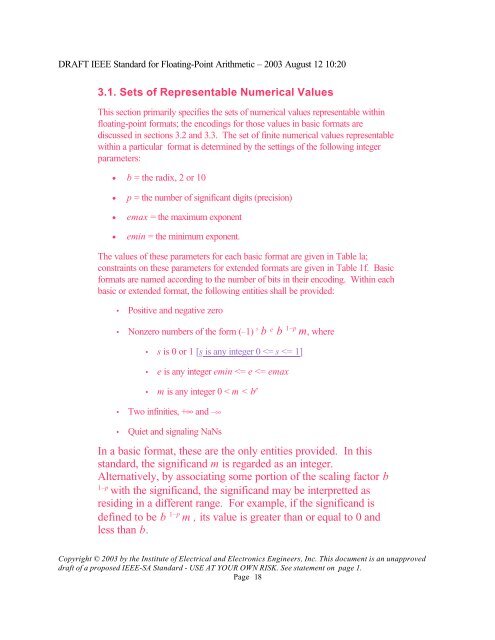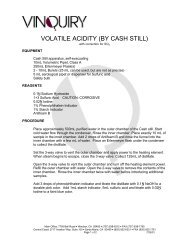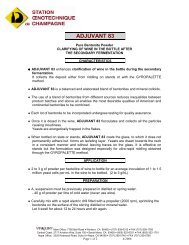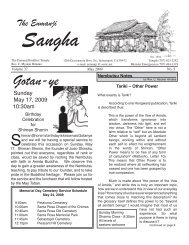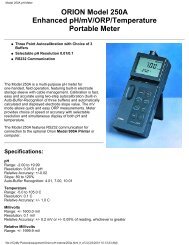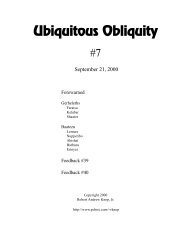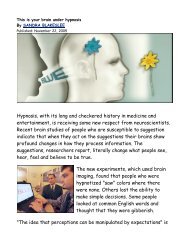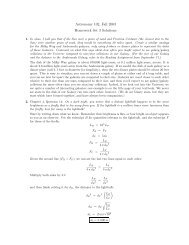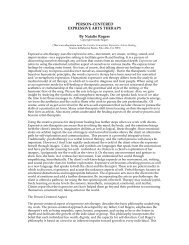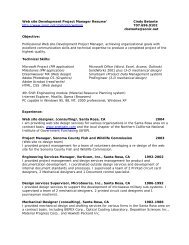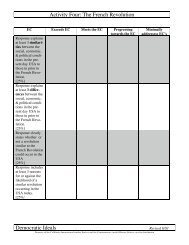DRAFT IEEE Standard for Binary Floating-Point Arithmetic - Sonic.net
DRAFT IEEE Standard for Binary Floating-Point Arithmetic - Sonic.net
DRAFT IEEE Standard for Binary Floating-Point Arithmetic - Sonic.net
You also want an ePaper? Increase the reach of your titles
YUMPU automatically turns print PDFs into web optimized ePapers that Google loves.
<strong>DRAFT</strong> <strong>IEEE</strong> <strong>Standard</strong> <strong>for</strong> <strong>Floating</strong>-<strong>Point</strong> <strong>Arithmetic</strong> – 2003 August 12 10:20<br />
3.1. Sets of Representable Numerical Values<br />
This section primarily specifies the sets of numerical values representable within<br />
floating-point <strong>for</strong>mats; the encodings <strong>for</strong> those values in basic <strong>for</strong>mats are<br />
discussed in sections 3.2 and 3.3. The set of finite numerical values representable<br />
within a particular <strong>for</strong>mat is determined by the settings of the following integer<br />
parameters:<br />
• b = the radix, 2 or 10<br />
• p = the number of significant digits (precision)<br />
• emax = the maximum exponent<br />
• emin = the minimum exponent.<br />
The values of these parameters <strong>for</strong> each basic <strong>for</strong>mat are given in Table la;<br />
constraints on these parameters <strong>for</strong> extended <strong>for</strong>mats are given in Table 1f. Basic<br />
<strong>for</strong>mats are named according to the number of bits in their encoding. Within each<br />
basic or extended <strong>for</strong>mat, the following entities shall be provided:<br />
• Positive and negative zero<br />
• Nonzero numbers of the <strong>for</strong>m (–1) s b e b 1–p m, where<br />
• s is 0 or 1 [s is any integer 0


